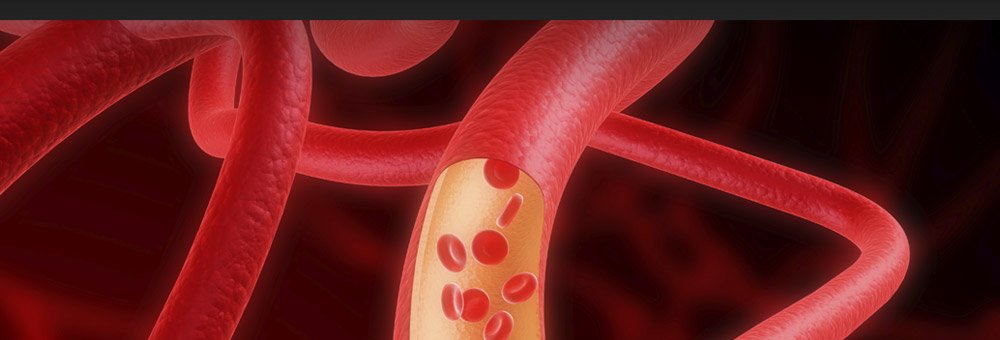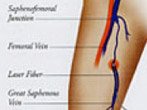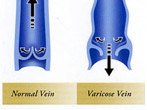
You are here: Home > Our Services > Specialised Procedures > Laser Vein Clinic
The Laser Vein Clinic
- Endovenous Laser Ablation of Varicose Veins
- Professor Matt Thompson and Mr Ian Loftus.
Veins are responsible for carrying blood from the legs back to the heart. In the legs there are two systems of veins, the deep veins which carry most of the blood, and superficial veins which are just under the skin and may cause varicose veins. All veins contain a system of valves which allow blood to travel up the leg.
Varicose veins occur when these valves fail, which allows blood to flow backwards down the leg and causes increased pressure in the superficial veins. These veins then become widened, more prominent and more tortuous. Varicose veins cause symptoms such as tiredness in the legs, discomfort and a feeling of aching. In severe cases varicose veins may cause leg swelling, bleeding, excessive pigmentation and ulceration.
The standard operative treatment for varicose veins involved a cut in the groin or behind the knee to find the main superficial vein and divide it. The vein is then stripped out of the leg and the varicose veins removed through a series of small cuts. Traditional surgery for varicose veins is successful but involves a general anaesthetic, considerable bruising, surgical incisions and a period of recovery.
A newer treatment for varicose veins involves laser surgery and is offered by the St Anthony’s laser vein clinic. During a consultation with a consultant vascular surgeon you will undergo an examination of your veins and a diagnostic test called a duplex ultrasound. This test uses ultrasound to look at the blood flowing through your veins and diagnoses the cause of your varicose veins. Most patients will be suitable for laser surgery on their veins – Endovenous Laser Ablation (EVLA).
EVLA uses laser energy to seal the vein from the inside, stopping blood flowing the wrong way down the leg and removing the cause of the varicose veins. The operation may be done under local anaesthetic. During the operation, the laser fibre is passed up the leg from a tiny needle hole at the level of the knee. The laser fibre is then positioned in the superficial vein by ultrasound guidance and local anaesthetic is given. The laser fibre is then activated and withdrawn slowly to completely seal the vein. After the laser treatment the leg is put in a compression stocking. Patients can walk immediately after the procedure and are discharged home the same day.
EVLA offers some advantages over traditional surgery in that it may be done under local anaesthetic, causes less pain and discomfort, less bruising, involves no surgical incisions and allows a quicker recovery. EVLA also offers some advantages over injection treatment for varicose veins which may sometime cause excessive pigmentation.




 Click here to get help
Click here to get help